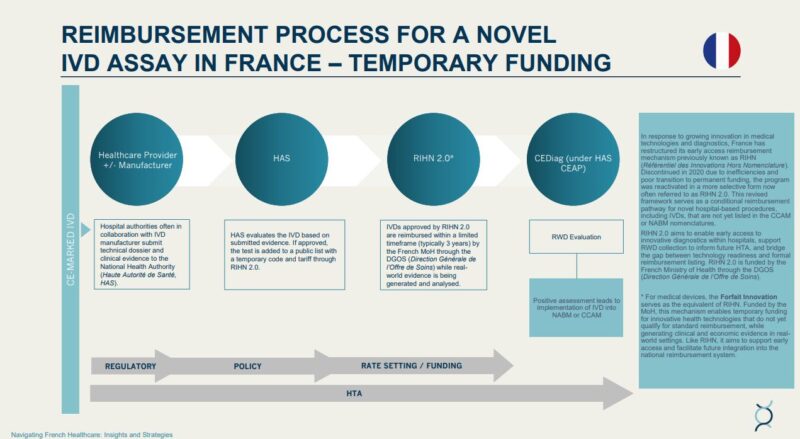Svetlana Nikic, Founder of Precision Oncology Consulting, shared a post on LinkedIn:
“Do you know the difference between CNEDiMTS, RIHN 2.0 and … and PECT?
All three are central to how France evaluates and funds innovative diagnostics but they serve different purposes. Understanding them is essential for anyone working on precision oncology and diagnostic innovation.
CNEDiMTS (National Committee for the Evaluation of Medical Devices and Health Technologies)
- A scientific commission of HAS (French National Authority for Health)
- Evaluates medical devices and other services
- Focus on Clinical benefit (SA), Added clinical value (ASA) vs comparators and Safety and role in the care pathway
- Output: Opinion used by CEPS (Economic Committee for Health Products) and MoH to decide pricing & reimbursement (LPPR listing).
RIHN 2.0 (Framework for Innovative Acts outside Nomenclature)
- Managed by HAS & MoH
Provides temporary funding for innovative medical procedures not yet in NGAP/CCAM (eg. NGS panels, biomarker assays, AI pathology) - Output: temporary reimbursement (up to 5 years) while evidence is collected to justify long-term inclusion
PECT (transitional coverage)
- Early access route for innovative medical devices after CE marking
- Provides fast-track, temporary coverage (minimum 12 months) while additional data is collected
- Evaluated by CNEDiMTS → possible bridge to permanent LPPR reimbursement
Key takeaway:
- CNEDiMTS = devices (LPPR route)
- PECT = early access for innovative devices
- RIHN 2.0 = acts/procedures/services (NGAP/CCAM route)
For NGS assays, you may need both:
- RIHN 2.0 for the sequencing service/act
- PECT/CNEDiMTS for the commercial CE-IVD kit
This is exactly the type of complexities that we cover in European Healthcare Mapping & Reimbursement Insights https://lnkd.in/dFpSQKhF , created to help companies navigate this sector, by clarifying the stakeholders, funding pathways, and reimbursement processes in France, where CNEDiMTS, RIHN 2.0 and PECT are just two key pieces of the puzzle.
Since launching these reports, new updates have been introduced (including around early access routes like PECT). These are not fully captured in the current version – but we plan to release updated editions in Q1 next year.”

More posts featuring Svetlana Nikic.
